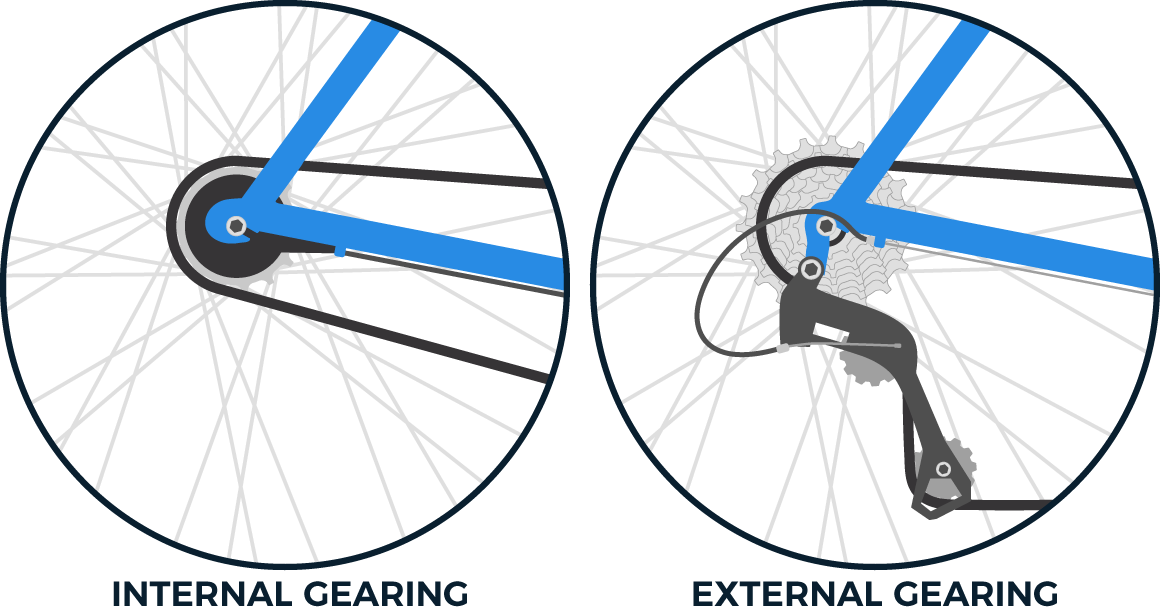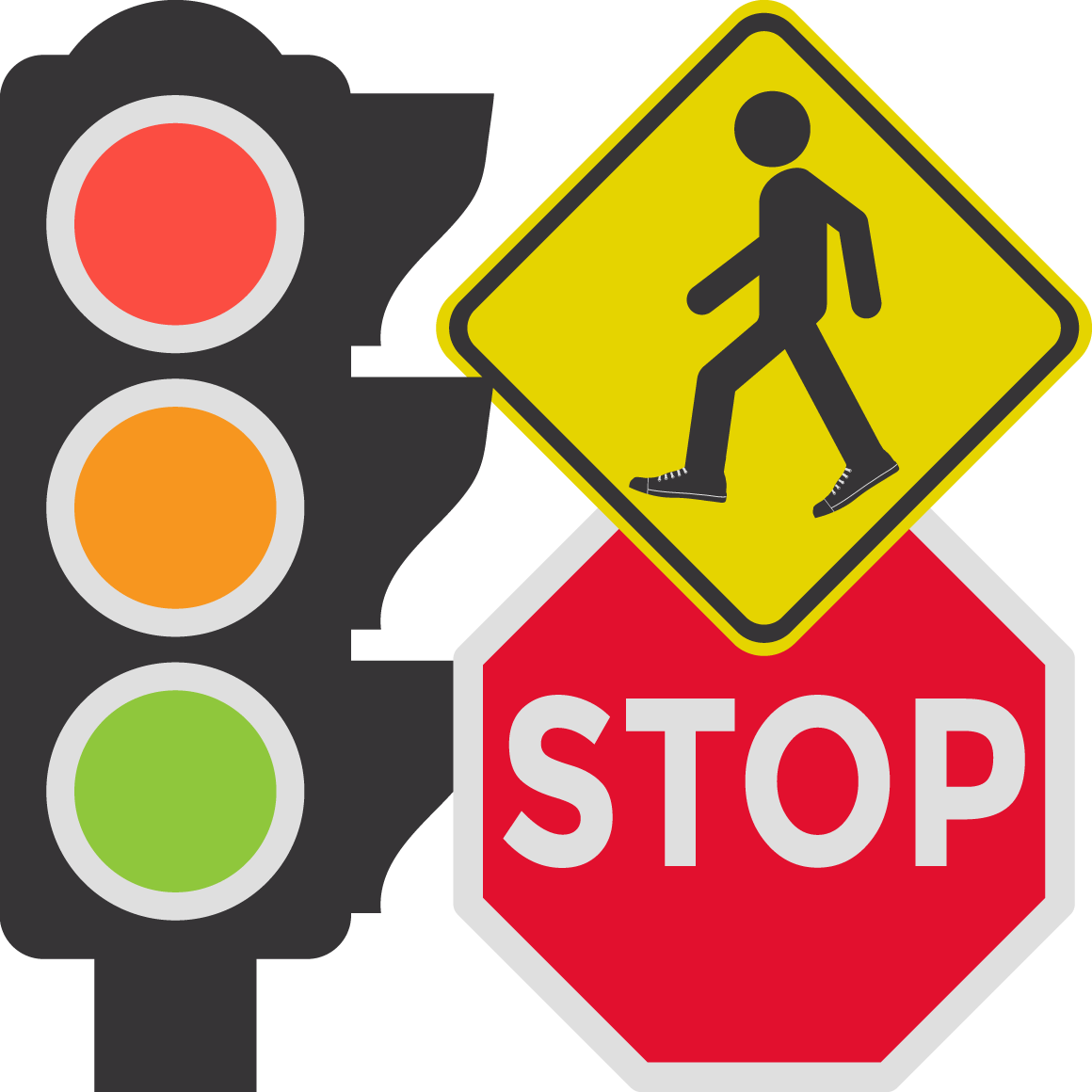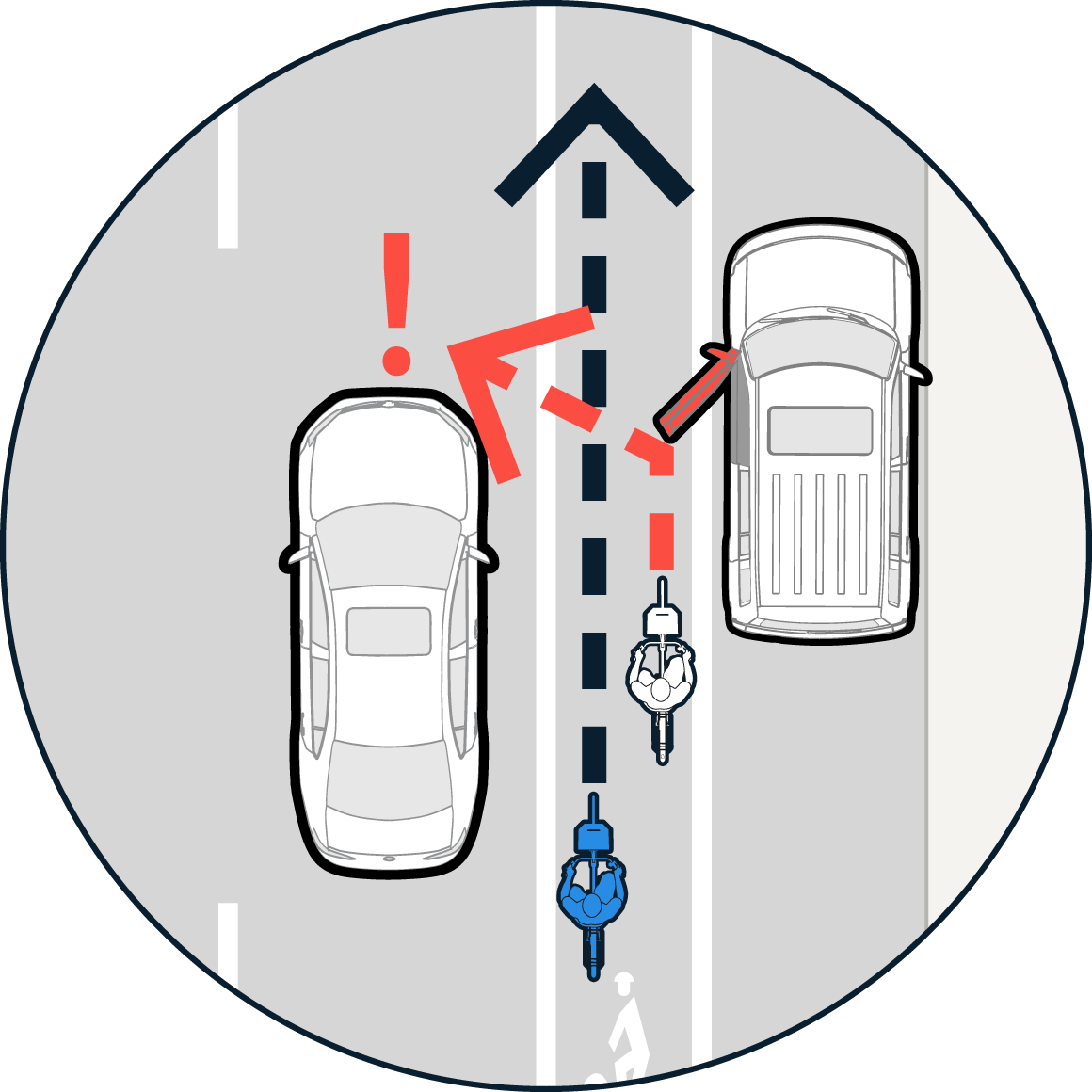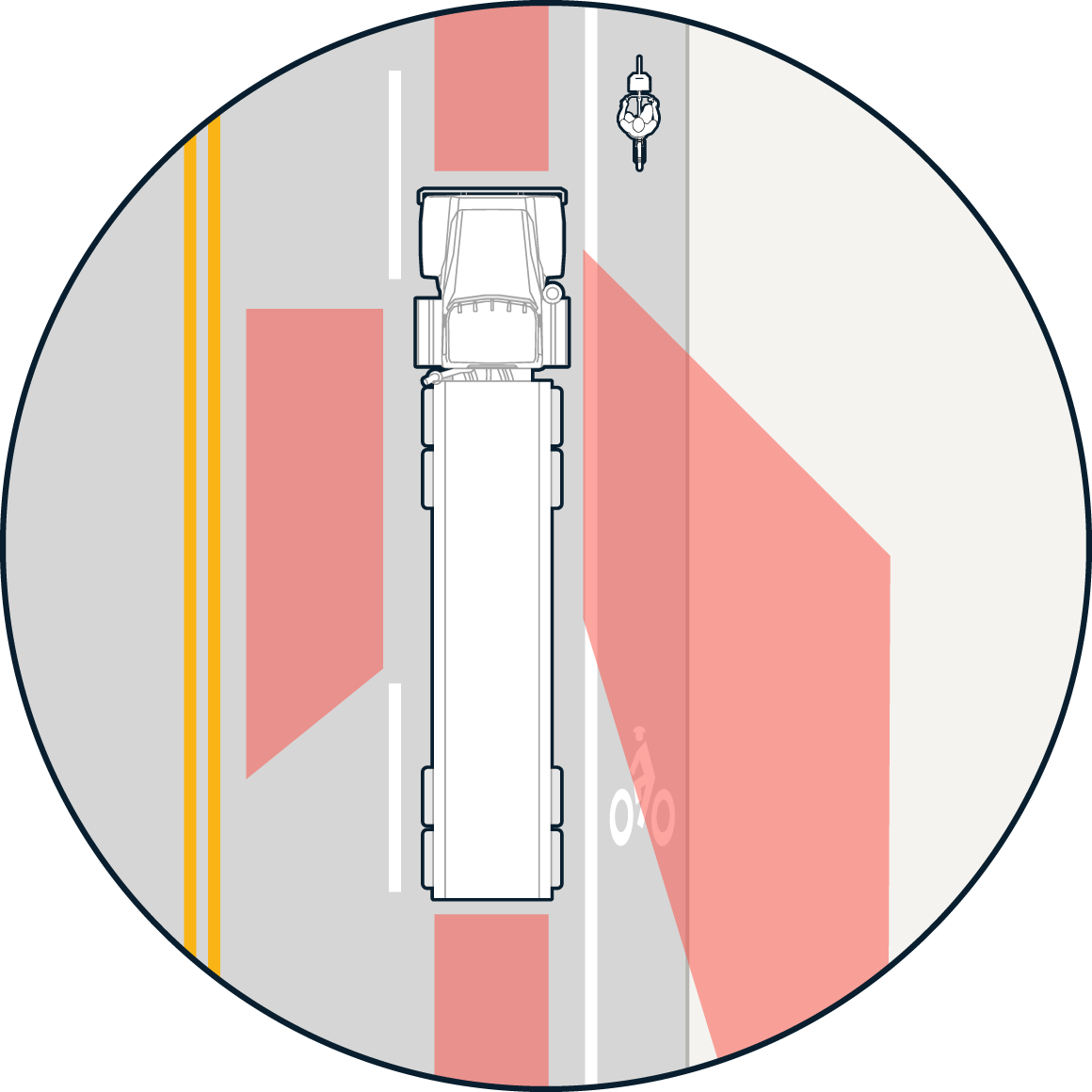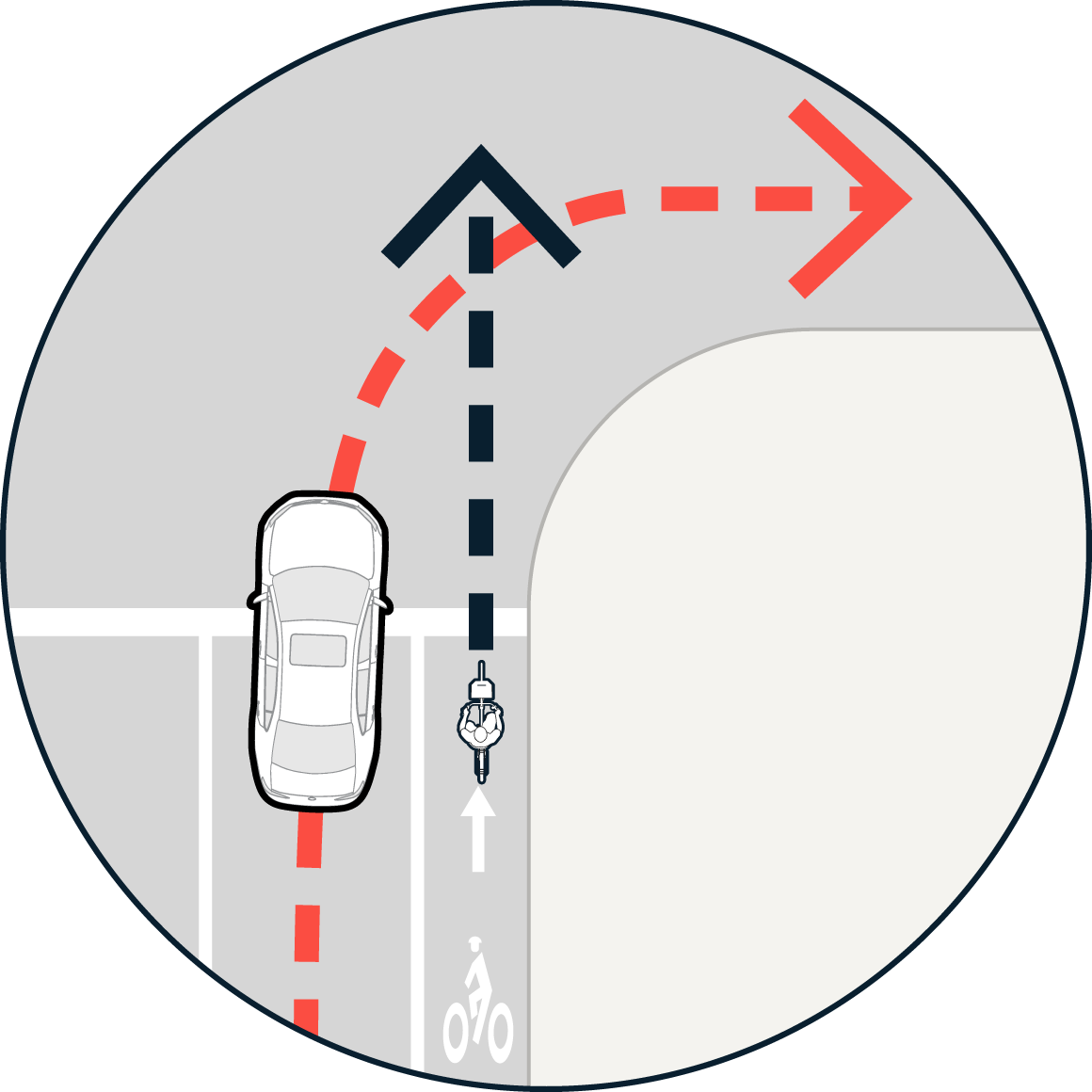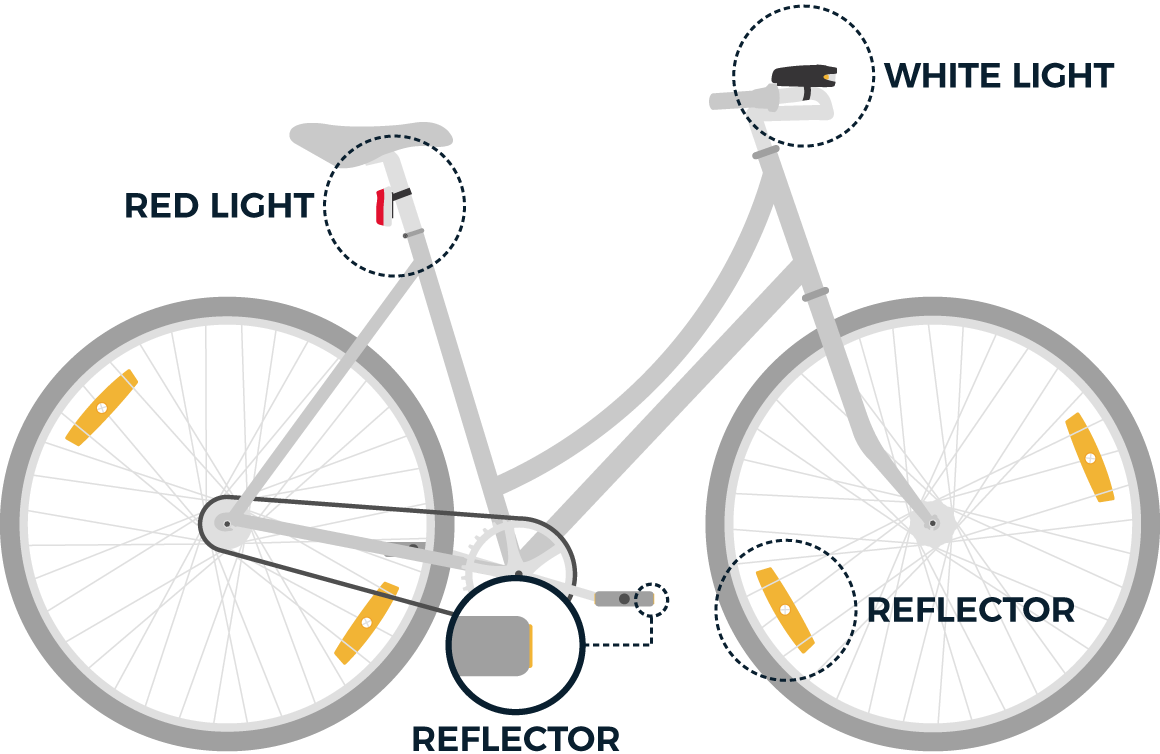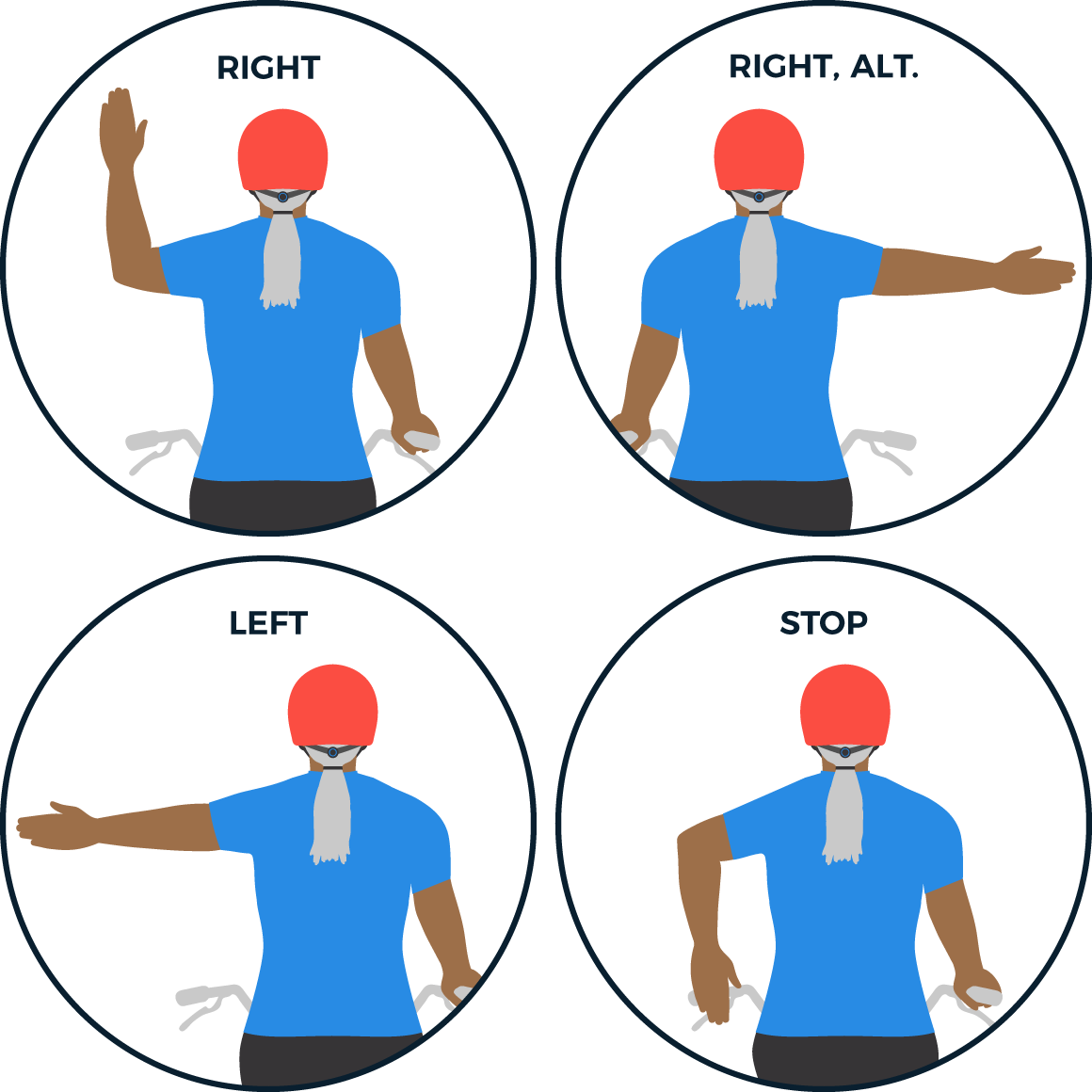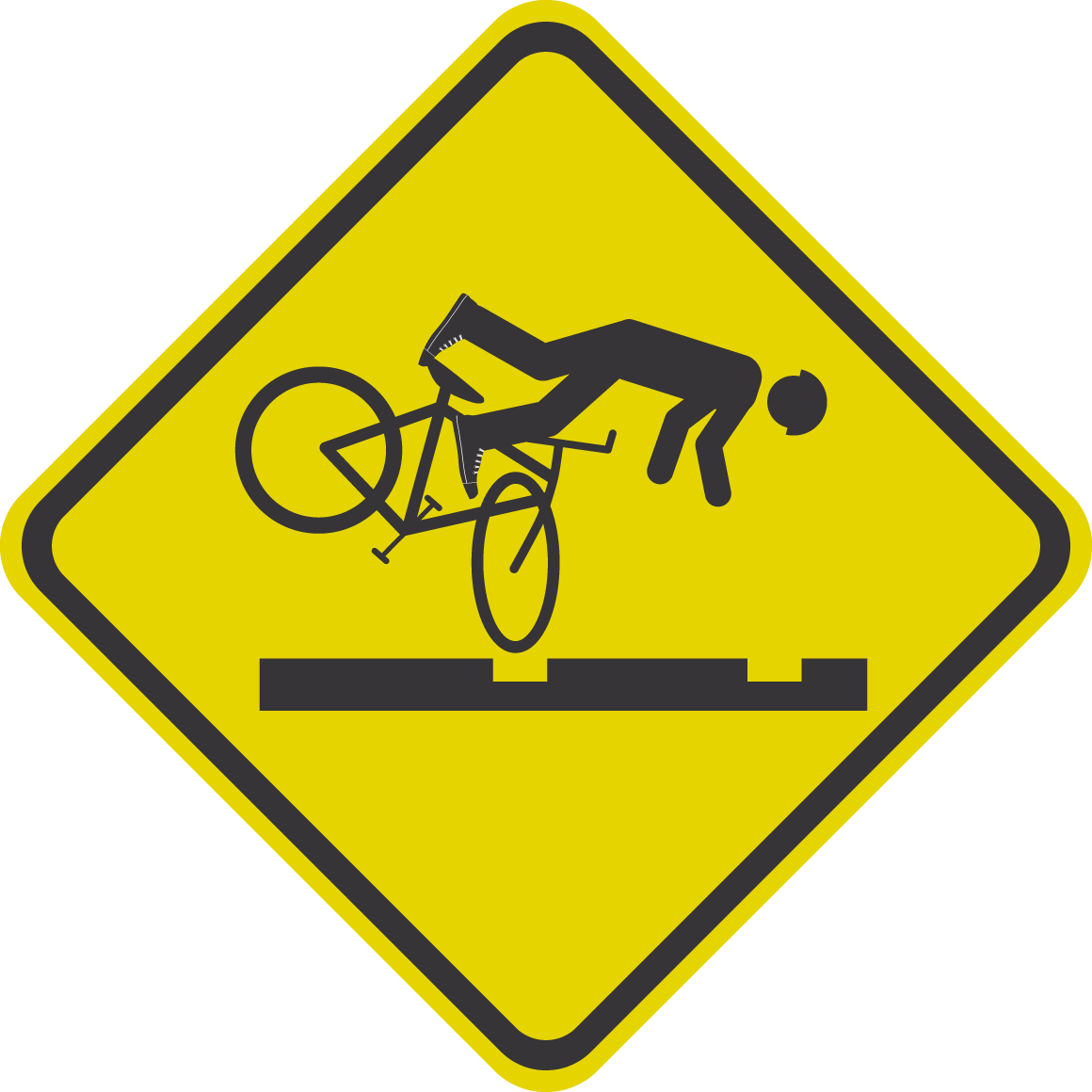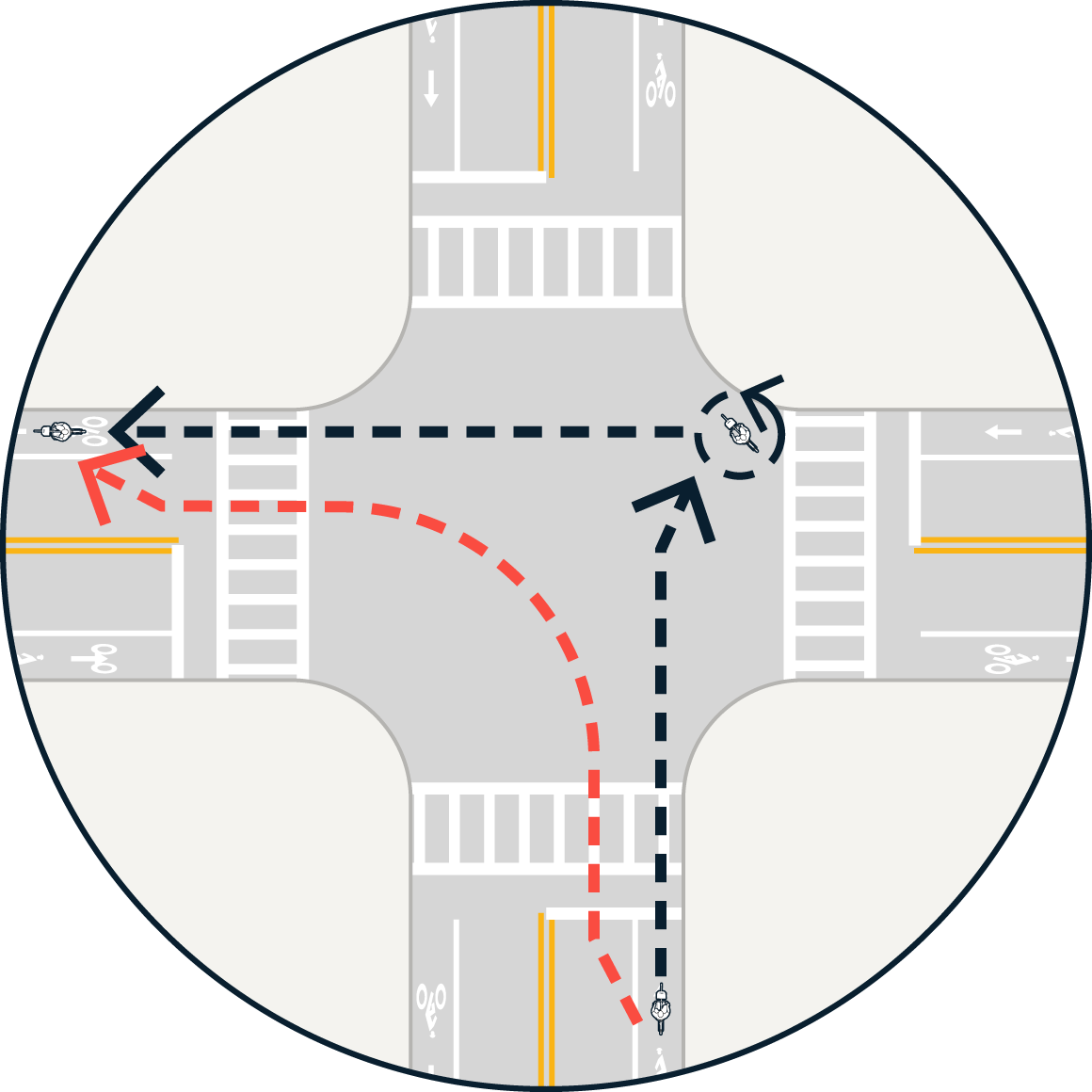Ride your bike
Here's what to do before each ride, how to ride on Boston's streets, and tips for riding in different weather conditions.
Before you ride
Before each ride, take a quick look at your bike:
Check quick release levers and for loose parts
If your bike has quick release levers (on the seats or wheels) make sure they are tight. Lift the bike an inch or two off the ground then drop it. Listen and look for any loose parts.
Test your brakes
Hold down the brake levers and rock your bike back and forth. Make sure the levers aren’t touching your handle bars and that the wheels aren’t able to move.
Make sure your tires are firm
Squeeze your tires to check the pressure. Generally speaking, they should feel firm to the touch. To be sure, check the side of your tire to determine the appropriate pressure range (listed as PSI and/or Bar). Use a pressure gauge to measure your pressure. Add air if necessary.
Look at your chain
Lift your rear wheel and push one of your pedals forward. Make sure the chain is running smoothly.
Chain lube is inexpensive and helpful to have on hand at home for maintenance. Clean the drivetrain clean (wipe off any grit, sand) regularly. Use chain lube sparingly, too much lube will attract more dirt into your drivetrain and create a mess! Be sure to reapply chain lube after riding in the rain.
Take a quick test ride
Take a quick test ride around the block before you take a longer ride. If everything is in order, you're good to go!
Fix your bike
Generally, your bike should be tuned up at least once a year. Small adjustments can help keep you safe and greatly improve your riding experience.
If you want someone else to fix your bike, your local bike shop will be happy to help. If you want to learn to do it yourself, there are a number of organizations that offer bike maintenance classes. You can also refer to online tutorials or books at the library.
When you ride
Relax. Go at your own pace.
Life isn’t a race, enjoy the ride. Relax your body. Go at a speed that feels comfortable to you.
If someone is trying to pass you, move to the right when it’s safe to do so. If you need to pass someone else, politely let them know, check to make sure there’s room for both of you, then pass on the left.
Use both brakes.
Avoid using one brake at a time. If you only use the front brake, you run the risk of flipping your bike over.
Scan ahead. Look back.
Keep your head up and your eyes on where you want to go. Staring at a pothole or other road hazard won’t help you avoid it. Without realizing it, you’ll ride right into whatever you’re looking at.
You should be able to look over your shoulder for a few seconds while keeping your bike in a straight line. This skill is essential for changing lanes and merging into other traffic. You probably won’t be able to do this on the first try. Practice until you are able to look behind you with confidence.
Use your gears, especially on hills.
Your gear shifter(s) will have numbers to tell you which gear you're in (except on road bikes). The lower the number, the easier it is to pedal. The higher the number, the harder it is to pedal. Take time to practice shifting gears on a level surface.
If your legs are moving fast but you’re not moving very far, shift to a higher gear.
When riding up a hill, gradually shift into lower gears. If your bike is in the lowest gear and you can’t keep pedaling, pull over and walk. You’ll get stronger with time.
External gearing
Your pedals need to be moving in order to shift gears. Keep pedaling, but reduce the pressure for a second or two as you shift.
If you attempt to shift without pedaling, the chain won’t move until you start pedaling again. You’ll hear crunching, and the chain may slip or fall off completely.
When approaching a stop light or sign, shift down a few gears so that it will be easier for you to get started.
If your bike has multiple sprockets in the front and in the back, avoid extreme combinations. You’ll be putting unnecessary stress on your chain and it could fall off.
Internal gearing
You can shift gears while stopped. Shifting down a few gears while at a stop light or sign will make it easier for you to get started.
Whenever you shift gears, it’s best to reduce the amount of pressure or stop pedaling for a second.
Share the road
In Boston, you’ll be sharing the road with people who are walking, biking, driving, and using public transit. Follow these tips to give yourself and others the best chance at arriving safely.
Yield to pedestrians.
Always yield to pedestrians, no matter what.
Follow the rules of the road.
Ride in the same direction as traffic. Stop at all stop signs and red lights. Yield to people walking across the street.
Avoid the door zone. Take the lane.
You have the same right to the road as people in motor vehicles. Always leave 2-3 feet of space (an arm’s length) between yourself and parked cars. You’ll have room to safely adjust if someone opens a door in your path or passes too close.
If someone opens a door in your path, call 911 to report the crash.
Avoid blind spots. Pass with care.
Buses, tractor-trailers, and other large vehicles have huge blind spots. In general, if you can’t see the driver in their mirror, they can’t see you. If you must pass a large vehicle, pass on the left. Do not pass a large vehicle that is stopped at an intersection.
Watch for the right hook.
When waiting for a green light, it’s best to wait in front of cars. If you’re to the right of a car, try to make eye contact with the driver to be sure they know you’re there.
People making right turns should yield and allow you to go through the intersection before they proceed. If they fail to yield, you could be caught in a right hook.
Use lights at night.
Give other people the chance to see you. Make sure that your bike has the appropriate lights and reflectors.
Be predictable. Use hand signals.
Ride in a straight line as much as possible. Don’t weave in and out of traffic or parking lanes.
Use hand signals to let others know when you intend to change lanes. Use a bell or your voice to let other people know when you intend to pass.
Beware of tracks and joints.
Green Line (and other trolley) tracks and expansion joints present a unique danger. If your wheel gets caught, you’ll be thrown off your bicycle.
Avoid lanes that have tracks or joints. If you need to cross, keep your wheels perpendicular (at a 90-degree angle) to the track or joint.
Make two-stage left turns.
When you need to turn left from a street with multiple lanes of traffic, consider making a two-stage left turn. This will prevent you from having to cross multiple lanes of traffic and is especially helpful at large intersections.
Step 1
Proceed to the far side of the intersection and stop in front of opposing traffic.
Step 2
Rotate your bike and wait for the green light.
Ride in all weather
Many people ride year round, and you can join them.
For tips on what to wear in various weather conditions, refer to the Outfitting Yourself section.
Hot days
Bring extra water, even for short trips. Staying hydrated is key to arriving comfortably.
Don’t inflate your tires to the maximum pressure. They may explode after spending time in the sun.
Rainy days
Ride a bit slower than you normally would, and take extra care on turns. Also, do your best to avoid metal plates, grates, and tracks. They are extra slippery when wet.
Even once the rain has stopped, biking across wet roads will lead to dirt and other debris being splashed onto you. Fenders will help keep you clean and dry.
Cold days
Check your tire pressure before you head out. Drastic changes in temperature can cause air to leak from your tires. Squeeze your tires to make sure they're firm. If they're not, use a pump to add some air. Properly inflated tires make for a safe and comfortable ride.
Make sure your lights are working. Cold weather can cause your batteries to drain faster. Take your lights with you once you’re done riding. Bring extra batteries in case your lights die during a trip.
SNOWY DAYS
If you want to learn to ride snowy conditions, practice with short trips on residential streets or on paths. Watch for snow that accumulates on your wheels, it will prevent your brakes from working properly.
If the temperature falls below 32 degrees, thin layers of water can quickly freeze and become black ice. Ride slowly and be on alert.
Other Boston by Bike sections
Boston by Bike
An overview of the Boston by Bike guide.
Choose a bike
We've provided information to help you find a bike that's right for you!
Get accessories
We've provided information about some of the most common items that you might want to add to your bike, or get for yourself.
Plan a route
We've provided information to help you figure out the best routes for bike trips. This includes info about taking your bike on the T.
Ride your bike
This is the current page.
Park your bike
We've provided information on where you should and should not park your bike.
Fix your bike
Learn how to repair your bike or just get a tuned up.
Report a problem, learn the laws
We've summarized information about how to report a bike-related problem and included a summary of the Mass. General Laws about biking.
(Women) learn to ride
We spread the joys of biking and encourage more women and gender-nonconforming people to travel by bike.



